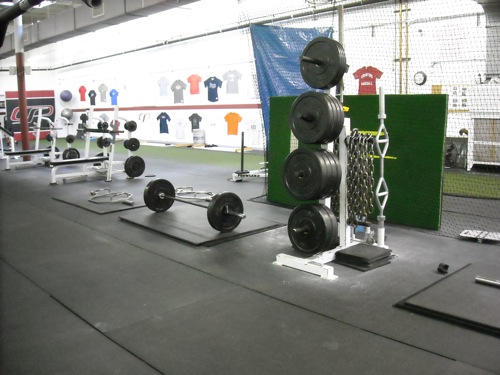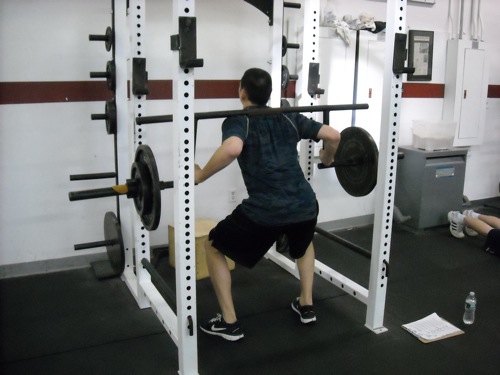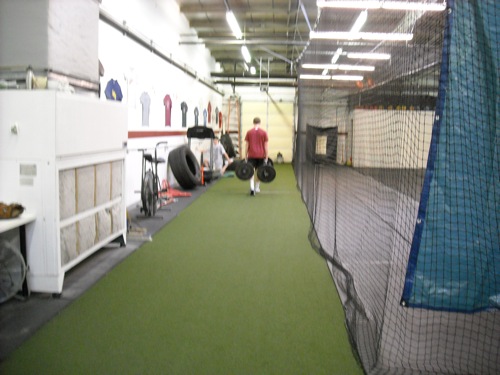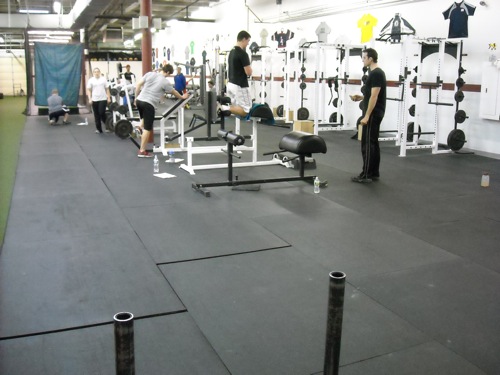It’s an obvious fact, but we often forget it: The same skills that make us successful in one area of life work in other areas too.
Many of us focus on how the different domains of our lives are different. We say things like:
“Sure, I’m an excellent mom. But I’m no good at all this exercise and fitness stuff.”
Or, “As an executive, I’m very on my game. But I just can’t figure out how to get a handle on the health domain.”
There’s a real irony here because we too often forget that the very same skills and abilities that make us a good parent or employee can also make us good friends, good at exercise, good at eating well, etc.
- We know we ‘re good lawyers or engineers but forget that evidence-based logic can be applied to nutrition.
- We know we’re good at caring for our families but forget to care for ourselves.
- We know how to plan a meeting but forget that we can also plan a meal.
It’s a shame really, because you can easily be competent across all domains of your life. The key is to forget the “newness” and complexity we associate with learning new things. Instead, look for the common threads of experience and tug on them. In doing so, we can untangle our world.
From initial confusion to “finding the threads”
For those of you who don’t know me, I’m one of the men’s Lean Eating coaches and I love my job! But for a while there, I was working as a teacher (which is an awesome profession for the right person) and feeling stagnant. I wasn’t following my passion.
So, after deciding to pursue my dreams and and change careers — but before actually doing it — I tried to prepare myself as best I could by reading everything I could get my hands on.
I watched DVDs, attended seminars, and talked to some of the most respected names in the industry. Everyone, it seemed, was successful beyond my wildest dreams.
Of course, I felt overwhelmed.
First, I wondered if I could ever be successful amidst these giants. Second, while all these people produced outstanding results, they all seemed to use different methods. I jumped from horse to horse, constantly switching my approach to match whichever expert I was following at the time.
I got only more confused and frustrated. Until it dawned on me:
The same skills that make us successful in one area of life work in other areas too.
Now, I’m a bright and educated guy. I knew I could figure this out. Here’s what I did:
Instead of focusing on what was different, I focused on what was similar.
I still paid attention to all the new methods I was learning. But I focused on underlying principles — which were more unified than I’d originally thought.
Insights from the intern
Fast forward to today. I’m working as a Lean Eating coach, pursuing a masters degree in High Performance Physiology, and interning at Cressey Performance. Today I’d like to talk about my internship specifically.
On my first day, in January, I received the intern “handbook”. It contained the essentials:
- how Pete Dupuis likes his coffee (a little almond milk, one packet of Splenda, and on his desk when he arrives);
- that Eric Cressey‘s dog Tank barks 2 times, followed by chasing his own tail, when he has to go outside;
- how to get the perfect smoky/spicy blend when making Chris Howard’s chili (3 pinches cumin, 1 pinch cayenne);
- DON’T get the Mogwai wet, feed it after midnight, or expose it to bright lights.
After mastering bathroom and coffee breaks, I started examining what makes CP so successful.

To say I’ve already learned a ton would be an understatement. Time spent at CP with Eric Cressey, Tony Gentilcore, and the other coaches is like dog years — one day is equivalent to seven. It doesn’t take very long to recognize key elements that make this place so successful.
But here’s the funny part. I realized that what folks are doing at Cressey Performance reflect the same principles I’ve been using as a Precision Nutrition Lean Eating coach for years.
The same skills that make us successful in one area of life also work in other areas too.
Here’s a list of what I think are the key components of success, comparing three different perspectives:
- The Cressey Performance (CP) approach
- My own approach as JB2
- The Precision Nutrition (PN) approach
(Note: why the JB 2? Because, although I’ve been called JB my whole life, let’s be honest, there’s only one JB)
Success tip: Get an honest assessment of who you are and where you are
The Cressey Performance approach (CP): When clients come into CP, we screen them, figure out who they are, then give them a program based on numerous factors including: their abilities, their goals, their sport, their position, etc. Before you can develop a plan, you need to figure out what/who you’re dealing with.
The Jay Bonn approach (JB2): A few weeks into the internship, CP chose random clients to provide some honest, anonymous written feedback on the interns. Aside from the odd comment, mine were pretty consistent: I was too quiet. This wasn’t much of a surprise to me. I’m a natural introvert. It takes me a while to open up and initiate conversation. I’ve been this way all my life. However, it doesn’t mean I am content to keep this my identity. This honest feedback I received can make me a better coach, and I can work on improving my communication skills.
The Precision Nutrition approach (PN): In the PN program, we’re always asking clients whether their identity matches what they want it to be. We ask them if they know how they’re perceived. Sure, we all want to be health-conscious people. But if we’re demonstrating behaviours that show otherwise, we may never reach our goals. Not only do we need physical assessments and personality assessments, we need lifestyle assessments too.
Success tip: Focus on the most important thing first
CP: We use the information clients provide, along with a combination of experience and common sense, to create programs based on what we feel is most critical to their success. When cueing and/or correcting clients during their workouts, we’ll begin with the most critical things. In other words, if someone is doing their best Quasimodo impersonation when deadlifting, the first thing to fix won’t be the angle of his/her toes.

JB2: Wanting to improve as a coach — which I’m sure will translate into other areas of my life, too — I’m determined to improve my communication skills. That’s priority #1 and what’s most important to my development. Learning more about biomechanics will just have to wait until I develop this critical area, my current limiting factor.
PN: If possible, we address the biggest stuff first. For example, if chewing gum is preventing a client from bingeing on candy and other sweets, do we ask clients to stop the gum chewing because artificial sweeteners might not be great for us? Hell no! We first work on the real problem — the bingeing behavior. Then we can work on the gum.
Success tip: Determine your success by your behaviors, not the outcomes
CP: We constantly remind clients about the importance of technique — not weight lifted. As Eric recently said to one of his baseball players, “We’re here to become better baseball players, not lift a certain amount of weight”. Sure, the end goal is to become better, drop fat, make the team, receive accolades, etc. — but it’s the behaviors of showing up, correct technique, etc. that enable it to happen. If you’re hurt and/or don’t move well, you won’t improve.

JB2: I adopted particular behaviours to improve my communication skills. I’m not merely saying, “I want to be a more vocal person.” That’s not really a behaviour, it’s the end result, which I have no control over. The specific behaviour I set for myself was to greet and speak to every client that came into CP when I was there. It didn’t matter if I had seen them every day that week; I still had to do it. For extra challenge, I decided that this couldn’t be just a “Hi”. I had to have an actual dialogue, which can be about anything. Greet and speak to each client in a meaningful way. That’s a specific action task that’s measurable. Either I did it or I didn’t — no waffling.
PN: We ask our clients to change their “I want…” to “I will…” Save the “I want” for your birthday presents. Instead, we give them specific actions to do. For example, change “I want to lose 5 lbs” (an outcome you have no control over) to “I will exercise 5 times per week” (a behaviour that’s meaningful and measurable).
Success tip: Develop the right physical and social environment
CP: The camaraderie at CP is insanely high. You’ll find professional athletes interacting with and encouraging high school freshmen as if they were their younger brothers. You’ll find women north of 50 sharing a power rack and going set-for-set with college kids in their off-season. Father and daughter deadlifting side by side. Mothers, sons, and uncles. After all, the family that lifts together… People will travel a few hours to train here. Not just the pro guys either. There are high school-aged kids driving from out of state — either driving themselves or having a parent take them if they’re not old enough. Everyone wants to be here. Everyone wants to train hard. You’re a product of your environment — including those people that surround you.

JB2: Within the first week at CP, I started lifting heavier and more confidently. (For instance, check out my video of a 215 lb front lunge at a bodyweight of 170 lb. It’s a good start!) Pretty soon I’ll be drinking gasoline and be able to light matches off my chest like Tony. (Certainly not at the same time, though — fire hazard reasons.) Seriously, have you seen the cast at CP? If you haven’t gone down in person, check out some of the videos, such as these, that they post on their blogs:
Enthusiasm and commitment is contagious.
PN: We encourage clients to set themselves up for success — to change their physical environments to work in their favour. For example, we start by taking stock of the kitchen. Is it full of junk food? Do people have the right materials (pots, pans, knives, etc.) to prepare good food? We also think about the work environment. If you always walk by the “candy bowl” en route to the copy machine, try taking a different route. You’ll be surprised at how powerful this one change is.
We encourage clients to surround themselves with people who are what the client wants to be. Want to be lean and strong? Hang out with lean and strong people. They’re not only doing the things to get and stay that way (thus serving as good examples on “how to”), but they’ll also make it easier when “decision time” comes (i.e “Do I want to go pull some heavy weight or do I want to take it easy on the recumbent bike?”; “Do I want to make it ‘difficult’ on the waiter and order a grilled steak with steamed veggies or do I want to just eat the Bloomin’ Onion like everyone else?”).
Success tip: Seek support and trust your coaches
CP: After getting their program, clients don’t look at it and ask to change things around. Why? Because CP has a reputation for producing results. They trust them. Plus most people don’t care why things work. Clients don’t need or want to know why, for example, they should keep their knees out when squatting. Nobody asks Eric why they do 4 reps instead of 6. They just want to know what to do, how to do it and if they’re doing it correctly. Believe me, the last thing a high school kid wants to know are the roles specific muscles play in certain movements. I speak from experience — the blank stare is something I quickly became familiar with.
JB2: In my own coaching development, after getting the “intern feedback” and deciding what action to take, I told Eric about my new mission in the gym (greet and speak to each client in a meaningful way). Had I kept it to myself, I likely would have done well for a week and then gradually faded. Even if it’s not on Eric’s mind like it is on mine, knowing that I spoke with him about this is the symbolic cattle prod I need. Plus, I’m now accountable to everyone reading this. (Holy crap… what’d I get myself into?)
PN: We tell our clients, “Sure, we can explain why we recommend a specific dose of fish oil… but do you really need to know 31 different benefits of fish oil before you let go and trust the experts?” In the LEP and S2B programs, one of the first things we ask people is to let go and trust in the program. Why? Because like CP, our results are obvious. We’ve helped thousands in meaningful and reproducible ways. If you can’t trust in our expertise, where are you going to go next? Bottom line: Try leaving the “why” to a coach. And if you’re a coach, don’t try to impress anyone by spewing out tons of information that may overload them.
Summary: Find the common threads
I’m incredibly fortunate. Right now, I’m interning at Cressey Performance and working with Precision Nutrition. At my internship, I spend the day working with Eric Cressey, Tony Gentilcore, and all the other great coaches. And, at home, I converse with John Berardi and everyone at PN.
I’m constantly surrounded by some of the most respected and sought after people in this industry. And being surrounded by good and skilled people not only improves my knowledge and skills, it also allows me to notice common threads.
To recap, success comes from:
- Getting an honest assessment of who you are and where you are
- Focusing on the most important thing first
- Determining success by behaviours, not outcomes
- Developing the right physical environment
- Seeking support and trusting in coaches and mentors
As you can see, what makes us successful in one area can be carried over to other areas of our lives. Cressey Performance and Precision Nutrition are already successful. And I’m well on my way, too.
How do I know? Well, don’t tell anyone, but I actually broke my poker face and cracked a smile the other day.
Learn more
Want to get in the best shape of your life, and stay that way for good? Check out the following 5-day body transformation courses.
The best part? They're totally free.
To check out the free courses, just click one of the links below.




Share